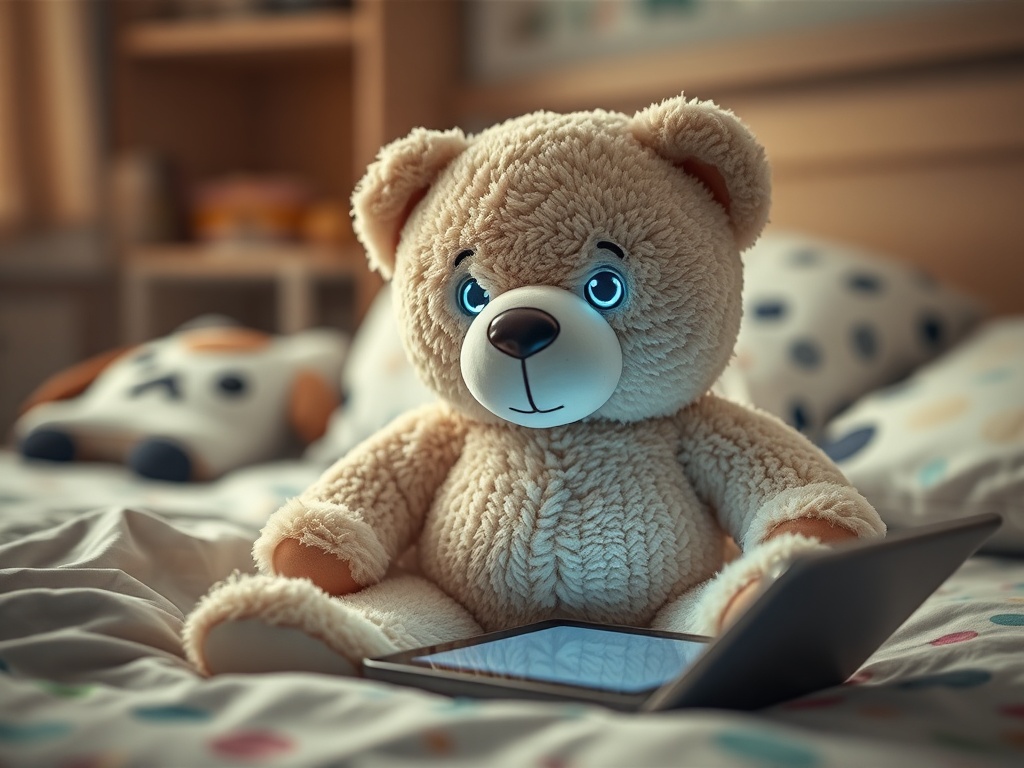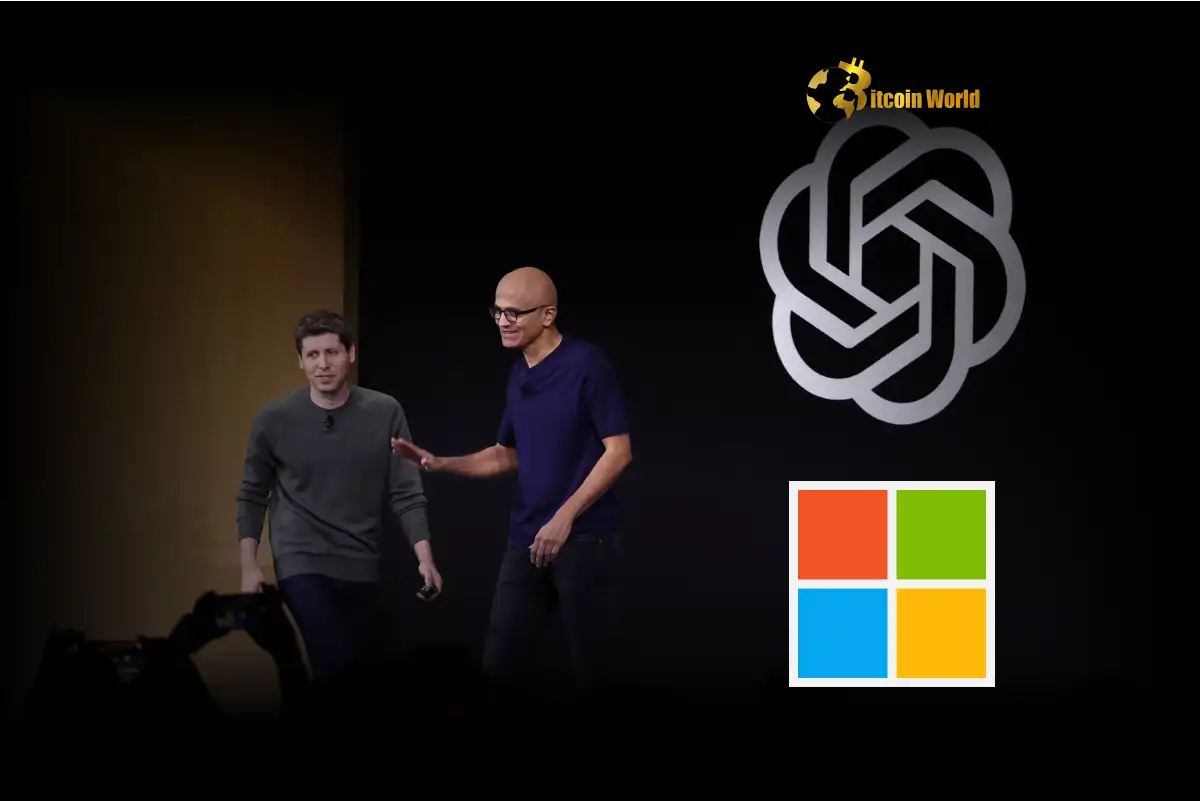BitcoinWorld

Alarming: Are AI-Powered Stuffed Animals the Future of Kids’ Tech?
In an era where digital innovation constantly reshapes our lives, the integration of artificial intelligence into everyday objects is no longer surprising. For those of us keenly observing the cryptocurrency and blockchain space, the rapid evolution of AI is a familiar narrative, often intertwined with discussions of decentralized AI or AI’s role in market analysis. However, a new frontier is emerging that touches a far more sensitive area: our children. The latest buzz isn’t about the next big crypto coin, but about AI-powered stuffed animals entering homes, marketed as revolutionary tools to reshape childhood play. But are these cuddly companions a harmless innovation or a Trojan horse for deeper concerns about kids’ tech and their developing minds?
The Rise of AI Toys: A Screen Time Solution?
Companies are pitching these adorable, talking plushies as a viable, engaging alternative to the ever-present tablet or TV screen. The promise is enticing: imagine a toy that can converse, play games, and adapt to your child’s curiosity, fostering interaction without the blue light glow. For parents grappling with excessive screen time, this sounds like a dream come true. Startups like Curio, with their offerings like Grem and Grok, are at the forefront of this movement, aiming to capture the hearts and minds of the next generation. They claim these AI toys can provide a rich, interactive experience that traditional toys cannot match, offering a dynamic companion that evolves with the child.
The marketing narrative suggests a clear benefit:
- Interactive Learning: AI can adapt stories and games to a child’s responses, making learning personalized and engaging.
- Companionship: A plushie that remembers past conversations and adapts to a child’s mood can offer a unique form of companionship.
- Reduced Screen Dependence: By providing an engaging, non-screen alternative, these toys aim to pull children away from digital devices.
Parental Concerns: Is This Good for Child Development?
While the concept of interactive toys is not new, the integration of advanced AI raises profound questions, particularly regarding child development. Amanda Hess of The New York Times recounts a demonstration with Curio’s Grem, which left her deeply unsettled. Her primary concern wasn’t that the toy was simply ‘lifeless’ but that it felt like ‘a replacement for me.’ This sentiment echoes a growing unease among experts and parents: what role do these sophisticated AI companions play in a child’s social and emotional learning?
Key reservations highlighted by critics include:
- Impact on Human Interaction: If an AI toy can mimic empathy and conversation, how does this affect a child’s ability to form genuine human connections and understand complex social cues?
- Curiosity’s Endpoint: Hess provocatively argues that these toys might inadvertently communicate that ‘the natural endpoint for [children’s] curiosity lies inside their phones.’ Even if it’s a plushie, the underlying technology is akin to what powers mobile devices, potentially normalizing a reliance on AI for answers rather than exploration of the physical world or engagement with human caregivers.
- Data Privacy and Security: As with any AI-powered device, especially those interacting with children, concerns about data collection, privacy, and potential security vulnerabilities are paramount. Who owns the data from these conversations, and how is it protected?
The core debate revolves around the quality of interaction. A human parent offers nuanced emotional responses, teaches resilience, and models complex social behaviors that an AI, no matter how advanced, cannot fully replicate. The ‘blank slate’ of a traditional teddy bear, ironically, might encourage more imaginative play, where the child projects emotions and narratives onto the toy, fostering creativity and independent thought.
Navigating the Future of Kids’ Tech: Actionable Insights for Parents
As these AI-powered plushies become more prevalent, parents are faced with a new set of considerations. It’s not about outright rejection but about thoughtful integration and understanding the implications. Just as we evaluate educational apps or gaming consoles, we must apply the same scrutiny to these new AI toys.
Here are some actionable insights:
- Understand the Technology: Research how the AI functions, what data it collects, and what privacy measures are in place. Transparency from manufacturers is crucial.
- Prioritize Human Interaction: Ensure that AI toys complement, rather than replace, face-to-face interaction with family and peers. Set clear boundaries for playtime.
- Observe and Evaluate: Pay close attention to how your child interacts with the AI toy. Does it stimulate creativity, or does it lead to passive engagement? Are there changes in their social behavior?
- Empower Imagination: Encourage traditional, open-ended play that doesn’t rely on technology. Provide opportunities for creative expression through art, building, and outdoor activities.
- Consider ‘Unplugging’ the AI: As Amanda Hess discovered, sometimes the best feature of an AI toy is the ability to remove its ‘brain.’ Her children still engaged with Grem after its voice box was removed, demonstrating that the physical toy itself can be a source of play, independent of its AI capabilities.
The conversation around AI-powered stuffed animals is a microcosm of the larger societal debate about AI’s role in our lives. For the crypto community, which often champions technological advancement, it’s a reminder that innovation must always be balanced with ethical considerations, especially when it concerns the most vulnerable members of society.
The Evolving Landscape of Child Development and Technology
The rapid pace of technological change means that the toys of today are vastly different from those of even a decade ago. As AI continues to advance, we can expect even more sophisticated interactions from our devices. This makes the discussion about child development and technology more critical than ever. The goal isn’t to shield children from technology entirely, but to equip them with the skills to navigate a technologically rich world while fostering their emotional intelligence, critical thinking, and capacity for genuine human connection.
Ultimately, whether AI-powered stuffed animals become a beloved staple or a cautionary tale will depend on how responsibly they are developed and how thoughtfully parents integrate them into their children’s lives. The potential benefits of personalized learning and engaging companionship are real, but so are the risks of substituting genuine human interaction with artificial intelligence. The future of play, and indeed, the future of our children’s development, hinges on striking this delicate balance.
To learn more about the latest AI market trends, explore our article on key developments shaping AI features.
This post Alarming: Are AI-Powered Stuffed Animals the Future of Kids’ Tech? first appeared on BitcoinWorld and is written by Editorial Team




